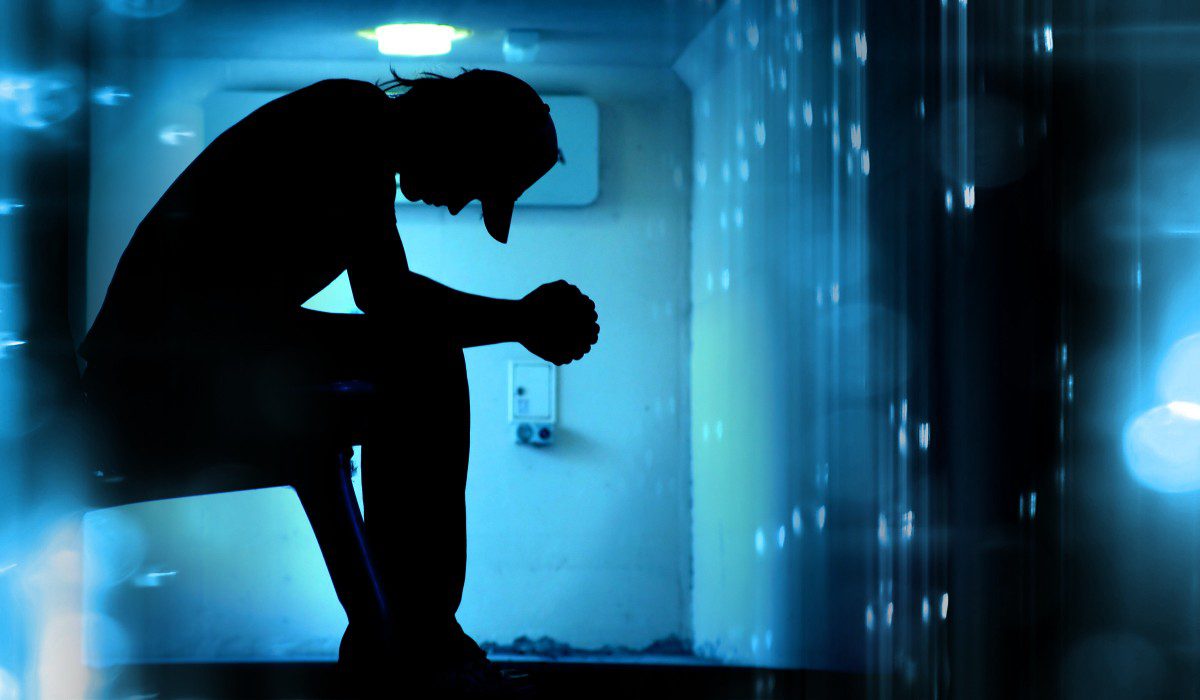The College Mental Health Crisis: A Call for Cultural Change – Part 2

Posted in: Parenting Concerns
Topics: Anxiety, Depression, Mental Illness + Psychiatric Disorders
This is the second blog post in a two-part series on college mental health in the United States. The first post focused on suicide prevention. The focus of this second post is general college mental health.
You can also tune in to the conversation – just search for “Shrinking It Down” wherever you get your podcasts.
In our first blog on college mental health, we began saying that college can be the best time of life.
For many of us adults, college was a time of liberation, and new opportunities for work, study and play. For learning new things – for growing up. And today, there are many more options for our students than even before – certainly more than were available to previous generations.
But as I personally think back on those idyllic days of freedom and autonomy – love, laughter, friends, and really feeling independent – I can’t help but remember the “near misses.”
We all had close calls, right? Think back on your days in college. Remember the times you saw your friend black out; or when you were nearly involved in a serious car accident; or ended up in some remote, and, in retrospect, dangerous part of town and had no idea how to get back to campus?
Maybe this is why we worry about our kids in college.
But frankly, there are other reasons to worry. It’s one thing to worry about isolated events. It’s another for us to appreciate that college is a very risky time for our kids. And what we don’t often think about is the incredible crisis of mental illness and emotional turmoil that most of our college students endure.
The College Mental Health Crisis
We are facing a true mental health crisis on our campuses today.
Let’s look at some very scary facts about mental health on our campuses:
Mental health issues are increasingly prevalent among college students:
- Almost half of college students had a psychiatric disorder in the past year
- 73% of students experience some sort of mental health crisis during college
- Almost 1/3 of college students report having felt so depressed that they had trouble functioning
- Mental health issues such as anxiety, depression, eating disorders and substance use are associated with lower GPA and higher probability of dropping out of college
- More than 80% of college students felt overwhelmed by all they had to do in the past year and 45% have felt things were hopeless
- 20% of female students report sexual assault or threatened sexual assault according to the Center for Disease Control
- College directors of counseling services are telling us that there has been a steady increase in the number of students with severe psychological problems and that the demand for counseling services has grown at least 5 times faster than average student enrollment
- Only 25% of students with a mental health problem seek help
To make matters worse:
- There is a tremendous lack of services in colleges and universities: On college campuses, the ratio of certified counselors to students overall is about 1:1000 – 2000 for small to moderate size schools, and 1:2000 – 3500 for large universities.
Obviously, something needs to be done right away.
Before we consider solutions, let’s think about possible triggers for mental health crises and barriers for getting help when it’s clearly needed.
Some of the vulnerabilities in college students include a pre-existing or new-onset of a psychiatric disorder or recognition of a previously undiagnosed learning disability. About 50% of psychiatric disorders begin by age 14 and over 75% arise by age 25. Many students have issues with inability to manage stress and feelings of exhaustion. Others struggle with overwhelming feelings of anxiety, depression, homesickness and loneliness. Most college students have intense experiences in relationships and just cannot navigate those waters.
We also need to appreciate that while as a society we treat 18 year olds as adults, the brain does not fully mature until about age 26. Between adolescence and the mid-twenties, the brain is largely driven by emotion. The neurological pathways between the “lower” emotional, pleasure-seeking and impulsive centers and the “higher” cortical regions that consider alternative solutions, consequences of actions, and utilize logic and reasoning to offset emotional pressures are still in process of formation. Technically the adult architecture of the brain, that is, the myelination of the neurons, is not yet fully established. So, youth still tend to be ruled by feeling, impulse, and pleasure seeking – which really complicates decision making and behavior in highly charged situations – situations that are very common in college.
In short, college students are not ready to function fully independently as adults. As someone who in college “never trusted anyone over 30” (our mantra) – this is not easy for me to admit or even say now. But it is true!
Now, what are the barriers to seeking help? For students and for parents, I think they fall in three categories: Stigma, Deficient Services, and Lack of Information.
Mental health problems are highly stigmatized universally. College students may worry about a “black mark” on their academic record. They also worry that a psychiatric disorder will be judged negatively by peers or faculty. And finally, there is a real lack of sound information about the nature, course, and treatment of psychiatric disorders. For all these reasons far too few seek help.
Colleges, as noted above, have very limited clinical services and mental health personnel. There is often inadequate means of providing evaluations or therapy. Insurance limitations are very common, and many student health plans are woefully thin in providing mental health care. Most students and parents have minimal knowledge about how and where to get help, such as how to get referrals on or off campus. Many students don’t even know where to find counseling or psychiatric emergency services on campus, or if they are eligible for care.
What can we do to correct this problem?
While it might seem that this is an insurmountable problem and there are real economic, and campus-wide bureaucratic and logistical obstacles unique to every college campus, most students, parents, faculty and college administrators really do want to see things change. The big question is how we proceed.
Here are some guidelines for making positive changes on our campuses:
- Establish new educational platforms around mental health and illness. Key to prevention and early intervention is education about mental health, wellbeing and promotion of resilience. Some educational initiatives include live and online modules that may be used in a wide range of forums on campus – from dorms to the classroom and to campus wide events. These modules would not just be for students, but helpful for parents and faculty. Educational objectives should include descriptions of psychiatric, situational and interpersonal problems, where to seek evaluation, advice and counseling, and ways in which stress may be prevented or alleviated. Further students need to know what they can do if they are worried about a friend or fellow student. In many cases mental health problems are known to other students but they simply do not know what to do, or feel that their intervention might make someone worse. Everyone on campus needs to know where to go and what to do if you are worried about someone. Each college campus should have a user-friendly website or app geared to mental health and wellbeing.
- Increase access to mental health services. Every member of the university community and parents should know ways of seeking help on and off campus. A college website could house all the needed information about such services, providers and the nature and coverage provided by insurance. If insurance coverage is inadequate for a particular segment of the college campus, the task force noted above should look at alternative policies for members of the community.
- Work with college administrations to change the system. We need our colleges to establish task forces and committees to look at the challenges confronting students that can impact their mental health and wellbeing, review the clinical resources available to help them manage stress and psychiatric disorders, and create new counseling centers to help manage these issues. This large endeavor should take into account educational services for the campus community and parents; increased workforce in mental health centers; and new funding sources to support this infrastructure. Above all, the process must work from the top down, with support from the highest levels of the colleges and universities. Ideally the task forces should involve all the stakeholders – students, parents, faculty, administration and mental health professionals. I would urge any members of these groups to petition college administration to set up a process of looking at mental health on campus. A number of colleges have begun this, but a lot more can be done.
- Support community forums. Central to mental health is feeling that one has a supportive community. We are pack animals. If students, faculty, and other members of the campus community can come together regularly and have a place to voice questions, concerns and tell their stories, we will have far less of our mental health problems hidden behind closed doors. Community support and acceptance is a powerful means of empowering students to verbalize and seek help without shame.

Will you take a 1-minute survey about this article?
- Foster peer counseling. It is well established that peer support is extremely helpful for students to open up about their concerns and problems. We have seen this demonstrated in the success of the AA programs for substance use disorders and in support groups for all sorts of emotional and behavioral problems. Organizations such as SADD (Students Against Destructive Decisions) geared to high school students and Active Minds, tailored to college students have been highly effective in the mission of peer counseling.
- Decrease the stigma of mental illness. We need to normalize not stigmatize. Perhaps the greatest barrier to seeking help with an emotional or behavioral problem is the fear of being isolated or marginalized. One in four individuals will have a psychiatric disorder during the course of life. With such a high prevalence of mental health problems we need to reframe emotional problems as a normal part of life, and not as a shameful blemish, a personal weakness or a character flaw. College educational and anti-stigma campaigns can be extraordinarily helpful in this mission.
- Promote means for increasing student wellbeing. Mental health is fostered by activities and skills including: good nutrition, exercise, adequate sleep habits, meditation, yoga, cognitive behavior therapy, collaborative problem solving, stress reduction techniques, reflective discussion, and expressive art groups. The inclusion of these activities are not hard to introduce on all college campuses.
If these recommendations are initiated and promoted by colleges, there is no doubt that we will effect a dramatic cultural change on campus – a culture that welcomes open dialogue about the ways in which mental health and wellbeing may be compromised and supports seeking help and guidance.
And this kind of transformation is likely to save lives. Isn’t this what we all want?
For additional information please see:
From the Clay Center
When Kids Leave Home: Part 1
When Kids Leave Home: Part 2
Examples of college webpages:
Counseling & Psychological Services – University of Pennsylvania
Mental Health and Well-Being – Cornell University

 Share
Share Tweet
Tweet







